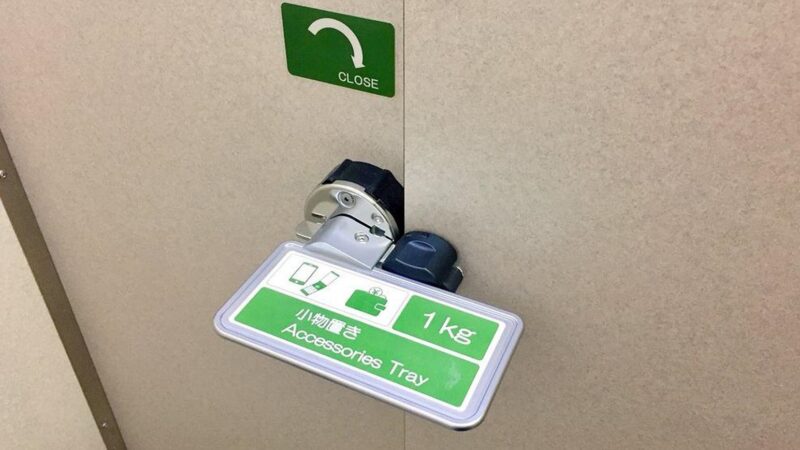
It is one of the more annoying first-world-problems of 21st-century living: a hurried stop at a public convenience, a quick exit and in the rush leaving a mobile phone behind. After realising some of their rest-room staff were having to spend 30 or more hours a month re-uniting left-behind phones with their owners, Japanese authorities set out to devise a simple, self-organising way to prevent people from losing things.
It is called an ‘accessory tray’ and consists of a shelf attached to the lever which holds the toilet door shut, giving a convenient place to put a mobile phone, wallet or a small bag. Because the shelf must be flipped up to open the door, it is impossible to leave things behind.
The innovation makes for a simple illustration of contradiction solving in action: we don’t want people to leave their possessions behind, but we know that they’re often distracted when in a rush. Not the easiest conflict to map onto the Contradiction Matrix, but if we had to make the best connection it would likely look something like this:

As far as the ‘accessory-tray’ solution is concerned, we can see evidence of several Inventive Principles in action:
Principle 23, Feedback – possessions are placed on the door unlock mechanism so are inherently visible at the critical ‘leave-behind’ moment.
Principle 10, Preliminary Action – users are encouraged to pre-place their possessions at the right position to ensure they can’t be forgotten.
Principle 5, Merging – the accessory tray is integrated into the door-lock mechanism.
Principle 24, Intermediary – the accessory tray!
Principle 25, Self-Service – the whole system is self-organising and self-correcting.
Simple when you know how.
